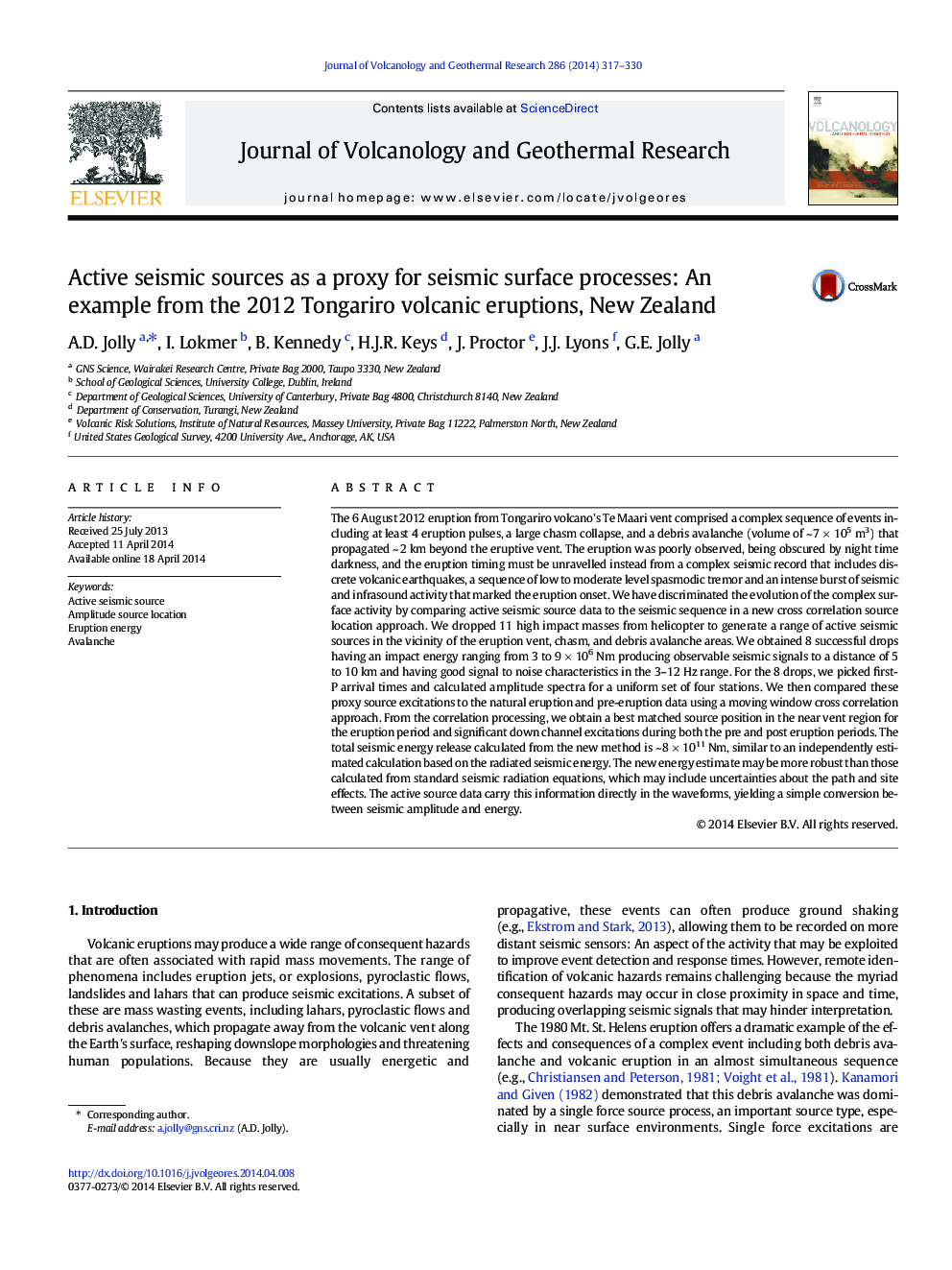| کد مقاله | کد نشریه | سال انتشار | مقاله انگلیسی | نسخه تمام متن |
|---|---|---|---|---|
| 6439688 | 1638336 | 2014 | 14 صفحه PDF | دانلود رایگان |

- The 2012 Tongariro eruption included directed jets, chasm collapse, and a debris avalanche.
- Masses dropped from helicopter create seismic sources as a proxy for hazardous surface activity.
- The timing and seismic energy release is determined for the eruption and debris avalanche.
- The method might be utilised to offer rapid assessment for a range of hazardous surface excitations.
The 6 August 2012 eruption from Tongariro volcano's Te Maari vent comprised a complex sequence of events including at least 4 eruption pulses, a large chasm collapse, and a debris avalanche (volume of ~Â 7Â ÃÂ 105Â m3) that propagated ~Â 2Â km beyond the eruptive vent. The eruption was poorly observed, being obscured by night time darkness, and the eruption timing must be unravelled instead from a complex seismic record that includes discrete volcanic earthquakes, a sequence of low to moderate level spasmodic tremor and an intense burst of seismic and infrasound activity that marked the eruption onset. We have discriminated the evolution of the complex surface activity by comparing active seismic source data to the seismic sequence in a new cross correlation source location approach. We dropped 11 high impact masses from helicopter to generate a range of active seismic sources in the vicinity of the eruption vent, chasm, and debris avalanche areas. We obtained 8 successful drops having an impact energy ranging from 3 to 9Â ÃÂ 106Â Nm producing observable seismic signals to a distance of 5 to 10Â km and having good signal to noise characteristics in the 3-12Â Hz range. For the 8 drops, we picked first-P arrival times and calculated amplitude spectra for a uniform set of four stations. We then compared these proxy source excitations to the natural eruption and pre-eruption data using a moving window cross correlation approach. From the correlation processing, we obtain a best matched source position in the near vent region for the eruption period and significant down channel excitations during both the pre and post eruption periods. The total seismic energy release calculated from the new method is ~Â 8Â ÃÂ 1011Â Nm, similar to an independently estimated calculation based on the radiated seismic energy. The new energy estimate may be more robust than those calculated from standard seismic radiation equations, which may include uncertainties about the path and site effects. The active source data carry this information directly in the waveforms, yielding a simple conversion between seismic amplitude and energy.
Journal: Journal of Volcanology and Geothermal Research - Volume 286, 1 October 2014, Pages 317-330